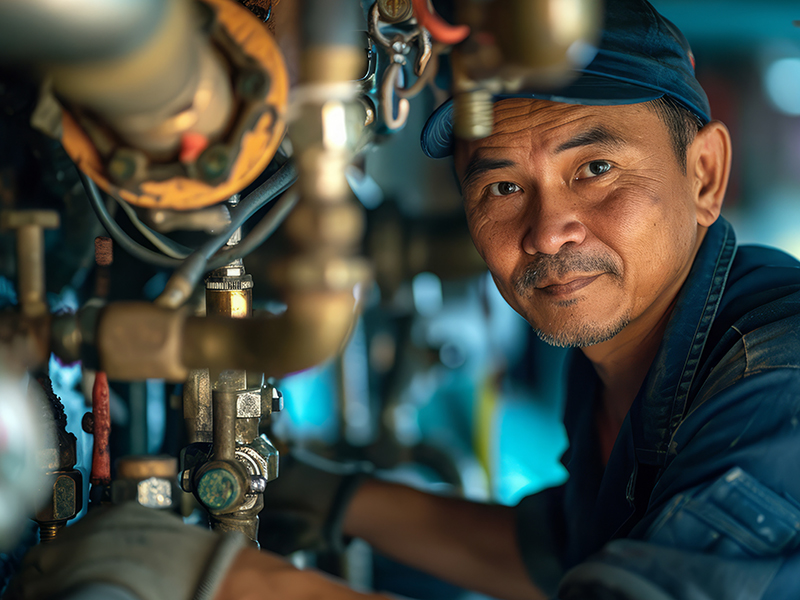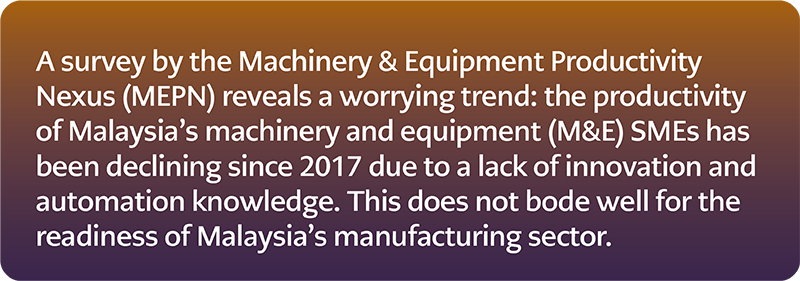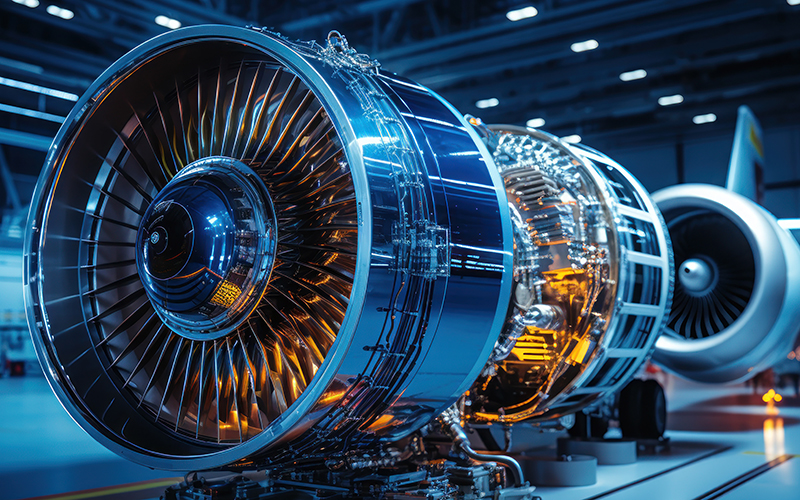The Manufacturing Renaissance: A Guiding Light Of Growth for Malaysia
Malaysia stands at a crossroads, recognising the gap between its declining manufacturing state and future aspirations.


Malaysia's new MADANI government promises an era of growth and prosperity to create a sustainable and inclusive economy that benefits all Malaysians. The government seeks to elevate the country’s economic stature with plans to promote innovation, boost exports, and create jobs. However, the fundamental question remains: How can Malaysia achieve these ambitious goals? One compelling argument is that manufacturing can catalyse this growth, but not through merely improving existing practices. Instead, a renaissance in high-end, skills- based manufacturing is essential, moving away from reliance on natural resources and low-cost labour.
Manufacturing as a Catalyst for Growth
The idea of transforming manufacturing is not novel. Malaysia’s Minister of Investment, Trade, and Industry (MITI), Tengku Zafrul Aziz, highlighted the need for Malaysia to shift towards higher complexity products. Of the top five exports in 2022, only electronics and electrical (E&E) and chemicals had higher complexity. In contrast, petroleum, LNG, and palm oil are resource-based exports. The question is how Malaysia can ensure future exports consist of more complex products.
The National Investment Aspiration (NIA) and the New Industrial Master Plan (NIMP) emphasise the need to focus on sectors such as aerospace, chemicals, petrochemicals, digital economy, and E&E, including medical devices and pharmaceuticals. However, Malaysia must embrace high-end manufacturing to realise this potential.
The Decline in Manufacturing Productivity
Headlines questioning Malaysia’s manufacturing capabilities, like the recent “Made in Malaysia” incident with Air Alaska, highlight a broader issue: the country’s perception of its manufacturing prowess. Despite producing doors for Boeing 737 MAX and having a history of aerospace manufacturing, Malaysia’s readiness to consider itself a high- value manufacturing country remains in question. Malaysia’s 737 MAX doors have since been cleared of any shortcomings.

The strategic importance of modernising Malaysia’s manufacturing sector has been evident for decades. From 1990 to 2022, the percentage of manufactured goods in Malaysia’s exports rose from 58.7% to 84.2%. This shift marked a transition from an agriculture-centric, resource-based economy to one prioritising industrialisation. The manufacturing sector now contributes over 30% to the country’s GDP and represents an opportunity to increase economic complexity. However, the sector’s growth has been uneven, with productivity gains lagging behind regional peers.

Moving up the complexity chain is challenging but essential. High-end manufacturing, such as aerospace, offers significantly higher value-add per worker than general M&E industries.
Premature Deindustrialisation
Since 2000, the share of manufacturing in Malaysia’s GDP has declined, signalling premature deindustrialisation. This trend contrasts with countries like South Korea and Taiwan, where manufacturing value-added has increased.
Malaysia’s continued reliance on input-based industries, which focus on raw materials and cheap labour, has hindered its progress. Malaysia must shift towards output-based industries that leverage technology, innovation, and efficient processes to catch up.
Increasing Manufacturing Complexity
To achieve greater complexity, Malaysia must focus on capabilities rather than just products or industries. Complexity in manufacturing involves producing a wide range of sophisticated products. For instance, a factory manufacturing metal sheets can increase complexity using advanced technologies and highly skilled workers to produce aeroplane components.
This shift requires a high level of engineering consideration and manufacturing traceability, which are critical in sectors like aerospace.
High-End Manufacturing: A Path Forward
Moving up the complexity chain is challenging but essential. High-end manufacturing, such as aerospace, offers significantly higher value-add per worker than general M&E industries. This capability can also be applied to other high-end sectors like medical devices. Increasing complexity requires leveraging existing capabilities to explore new industries, thus broadening the economic base.
Industry 4.0, characterised by integrating cyber-physical systems, IoT, and cloud computing, presents a significant opportunity for Malaysia to enhance its manufacturing capabilities. However, when it comes to small and medium-sized enterprises (SMEs), the question of complexity again arises and acts as a barrier to adoption. At the Advanced Manufacturing and Robotics Accelerator Centre of Excellence (AMRACE), we have been supporting the transformation of SMEs and have taken a very hands-on approach. SMEs need support to understand how to compete in higher-value and more complex product spaces.
There is a distinct lack of design thinking amongst SMEs in Malaysia, mainly those engaged with build-to-print contracts. Design thinking is essential for being agile and responsive to market changes. Its emphasis on prototyping and iterative testing aligns with the need for agility, allowing companies to quickly develop and refine products and processes.

Malaysia needs a significant change in mindset, which must be brought about through a “learn by doing” approach to change management.
Addressing Challenges: Talent and Implementation
Tackling these challenges necessitates a concerted effort. Malaysia’s past approach has been criticised for being too static, relying heavily on management consultants for strategic roadmaps without driving implementation. Other countries, like Vietnam and Indonesia, are catching up, underscoring the need for Malaysia to act swiftly.
Government subsidies and incentives are crucial in guiding industries towards high-end manufacturing. Countries like Korea and Taiwan have successfully used aggressive subsidies for industrial upgrading. For Malaysia, incentives for targeted sectors and close monitoring of firms are essential. Appointing industry champions with tacit knowledge, similar to Taiwan’s approach with Morris Chang in the semiconductor industry, can drive implementation effectively.
Malaysia must aggressively embrace globalisation to compete globally. Competing internationally will drive local firms to improve technology and quality. Enhancing higher education is vital to upskilling the workforce and fostering home-grown innovation.
Balancing Regional Development and Sustainability
Balanced regional development is imperative for reducing economic imbalances and tapping regional talents. Decentralising industry, as seen in Bavaria, Germany, can effectively disperse industry, academia, and government functions. Sustainable development, including effective resource utilisation and renewable energy integration, is also crucial for high-end manufacturing ecosystems.
Ultimately, Malaysia needs a significant mindset change, which must be brought about through a “learn by doing” approach to change management.

The current education system must cultivate attitudes towards risk-taking, innovation, and continuous improvement. Dismantling the status quo and promoting an innovative culture is essential for embracing complexity and achieving higher performance levels.
Malaysia stands at a crossroads, recognising the gap between its current state and future aspirations. Government guidance through subsidies and incentives is necessary but must be met with a motivated and capable audience. Embracing a manufacturing renaissance focused on high-end, complex industries and leveraging Industry 4.0 technologies can be the game-changer Malaysia needs.
Naguib Mohd Nor is the CEO at AMRACE and STRAND, besides being an adjunct professor at Universiti Malaya.





